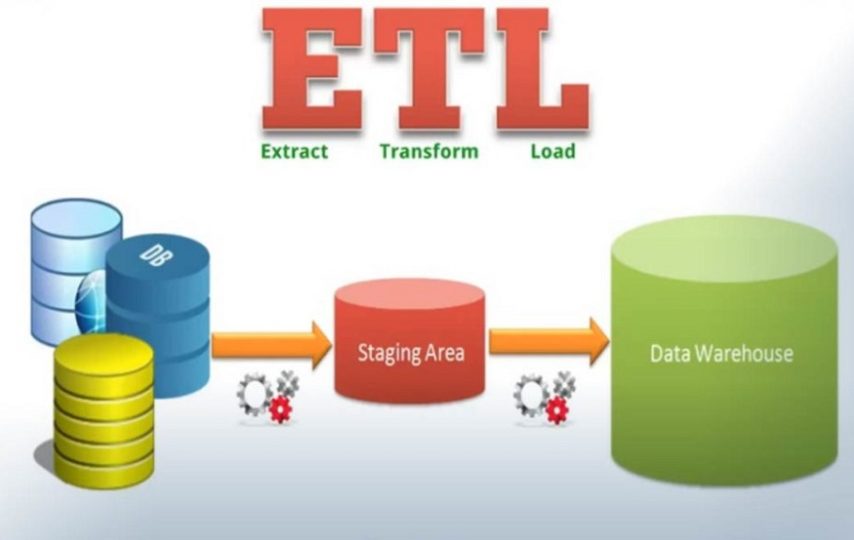Data’s are created in a manner that they will be optimized for the information recovery as quickly as possible. As a means of expediting data retrieval, data warehouses often store information more than once, both during their most detailed and summarized (accumulated) versions, in order to reduce access speed.
With a data warehouse, it is feasible to write queries and reports that need less technical skills and that are more straightforward. However, it is generally preferable to have employees of the IT division create and maintain reports that are produced by data warehouse in most situations. This one will expedite the setup and eliminate any potential issues in the future.
Which are the various kinds of ETL tools available?
Hand-coding
Firms are willing to employ no Analytic tool at all if they so choose. Because it makes use of current IT resources, custom the procedures of gathering, processing, and transmitting information is the most cost-effective method to get started with data warehousing and data lake together. Nevertheless, even small modifications necessitate the need for administration, which raises the cost of operations over time.
Cloud based tools
Cloud monitoring technologies, in particular, assist us in gaining access to virtualized computing infrastructure. The significance and function of such public cloud tools is to check the effectiveness and security of critical software and services.
Real-time tools
Real-time ETL solutions, on the other hand, collect data from sources and deliver it to implementation in real time via the use of networked advertise and real time data treatment.
The speed of ETL Tools
Some businesses may choose the ETL method, also called as in-database conversion, as a replacement for traditional ETL since it is more cost-effective. Most of the data management activity occurs after the data has been loaded into the data base or warehouses; while the data is still in its raw state, it is converted and promoted to tables before it gets available to consumers.
On the surface, the primary difference among in assimilation and more traditional ETL is the rearranged order in which the data is changed – but the difference is considerably more complex than that. Following completion of a goal, changing the data will help in optimizing productivity and lowering costs. In the case of, for instance, in-database modification works that occur at the telecommunications level, their weighted capability is reduced. Some benefits of ETL tools are mentioned below:
1. Effort on the job
First and foremost, ETL solutions offer a significant speed increase to business intelligence users, since most of the processing that would normally be done server-side occurs that before databases is ever accessed for reporting purposes. Instead than depending on raw or manually handled data, use an ETL solution.
2. Utilization Ease
The vast majority of current ETL programmes let people to engage with them via a GUI (graphical interface), making it easy to build ETL processes with just rudimentary programming skills and minimal experience. An industry’s ability to build and manage its data warehouse grows as a result of this spike in the number of employees on whom it can depend.
3. Return on Investment (ROI)
All of the aforementioned advantages of using an ETL tool result in a better return on investment. A continuous return on your initial investment in an ETL tool and data storage is ensured by improved speed, economy, and data quality. Less error-prone operations, fewer people, quicker querying, plus better outcomes will not only enable you to do more with less resources, but they will also sharpen your market advantage.
4. Reduce Unneeded Expenditures
Data transfer is a technique that is iterated upon. This method is simple to modify and replicate, allowing you to save a substantial amount of time and work. You may analyse changes throughout the whole data set in a short period of time. As a result, if there is a change in the record, you will be able to predict exactly how the changed data would look.
5. Resilience in the face of disruption
In our evaluation, we discovered that many of the home-grown large databases are very unstable, with many emerging operational issues. ETL tools offer the capabilities and requirements necessary for running and maintaining the system when it is in use in the field. It is definitely feasible to design and develop an ETL application that is very well and hand-coded. A data warehouse / predictive analytics team may, however, build on the capabilities of an ETL tool to create a more robust ETL system since it is simpler for them to do so.
Final Words
The significance of Snowflake ETL services in an organization is proportional to the extent to which the company depends on data warehousing. Extraction, loading, and transformation enable raw data to be fed into a target and changed while at that destination. It is possible to run sophisticated ETL scripts natively in Snowflake that significantly enhances both the speed and the accuracy of the data intake process.













